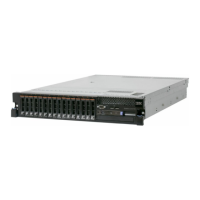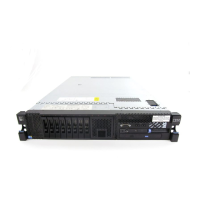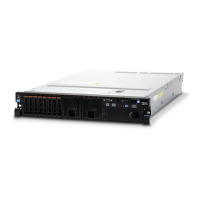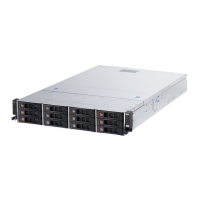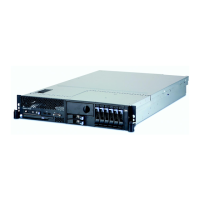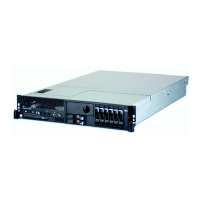Damaged data in CMOS memory or damaged server firmware can cause
undetermined problems. To reset the CMOS data, use the CMOS switch to clear
the CMOS memory; see “System-board switches and jumpers” on page 17. If you
suspect that the server firmware is damaged, see “Recovering the server firmware”
on page 109.
Check the LEDs on all the power supplies (see “Power-supply LEDs” on page 69).
If the LEDs indicate that the power supplies are working correctly, complete the
following steps:
1. Turn off the server.
2. Make sure that the server is cabled correctly.
3. Remove or disconnect the following devices, one at a time, until you find the
failure. Turn on the server and reconfigure it each time.
v Any external devices.
v Surge-suppressor device (on the server).
v Modem, printer, mouse, and non-IBM devices.
v Each adapter.
v Hard disk drives.
v Memory modules. The minimum configuration requirement is 2 GB DIMM per
installed microprocessor.
v Service processor (IMM).
The following minimum configuration is required for the server to start:
v One microprocessor (slot 1)
v One 2 GB DIMM per installed microprocessor (slot 3 if only one
microprocessor is installed)
v One power supply
v Power cord
v Three cooling fans
v One PCI riser-card assembly in PCI riser connector 2
v ServeRAID SAS controller
4. Turn on the server. If the problem remains, suspect the system board.
If the problem is solved when you remove an adapter from the server but the
problem recurs when you reinstall the same adapter, suspect the adapter; if the
problem recurs when you replace the adapter with a different one, suspect the riser
card.
If you suspect a networking problem and the server passes all the system tests,
suspect a network cabling problem that is external to the server.
If the problem remains, see “Troubleshooting tables” on page 43.
Problem determination tips
Because of the variety of hardware and software combinations that you can
encounter, use the following information to assist you in problem determination. If
possible, have this information available when you request assistance from IBM.
v Machine type and model
v Microprocessor and hard disk upgrades
v Failure symptom
– Does the server fail the diagnostics tests?
– What occurs? When? Where?
– Does the failure occur on a single server or on multiple servers?
– Is the failure repeatable?
Chapter 3. Diagnostics 155
